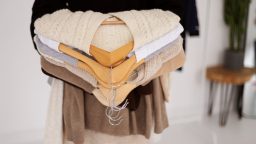We’ve all been there – you see a cute dress or a trendy pair of shoes, and before you know it, you’ve made an impulse purchase. But then, weeks or months later, the item still hangs in your closet with its tags on, never having been worn. Overbuying or buying clothes that don’t suit your style or lifestyle is a common mistake, but with a little planning and awareness, you can stop wasting money on items you’ll never wear. Here are some shopping tips to help you make smarter choices and build a wardrobe you truly love.
- Know Your Personal Style
One of the main reasons we buy clothes we never wear is because we’re not entirely sure what our personal style is. Shopping can become overwhelming with so many trends and options, and it’s easy to get distracted by the latest fashion buzz. To avoid buying clothes that don’t suit you, take some time to reflect on your style preferences. What colours, cuts, and fabrics make you feel confident and comfortable?
Create a mood board or Pinterest board of outfits you admire, paying attention to common themes. Are you drawn to minimalist, casual looks, or do you prefer something more bold and eclectic? Once you have a clearer picture of your personal style, you’ll be able to shop more intentionally and avoid being swayed by items that don’t fit into your existing wardrobe.
- Build a Capsule Wardrobe
A capsule wardrobe is a collection of essential, versatile pieces that work well together and form the foundation of your wardrobe. This includes items that can be mixed and matched, such as neutral-coloured tops, well-fitted jeans, and timeless outerwear. The idea is to invest in fewer, high-quality pieces that you can wear in a variety of outfits, rather than buying trends or items that may quickly fall out of fashion.
Having a capsule wardrobe can help you resist impulse buys because you’ll be focused on filling in the gaps of your wardrobe with pieces that complement what you already own. Start by evaluating what you already have, and then make a list of missing items you truly need, such as a classic pair of boots or a white button-down shirt.
- Avoid Impulse Purchases
Impulse shopping is one of the biggest culprits when it comes to buying clothes you’ll never wear. Whether you’re shopping online or in-store, it’s easy to get swept up in the excitement of a good deal or a trendy item. To avoid making purchases you’ll regret, give yourself a “cool-off period” before buying anything. For example, try waiting 24 hours before making a purchase. This pause allows you to consider whether the item truly fits into your wardrobe and if you’ll actually wear it.
If you’re shopping in-store, leave the item behind and come back later if you’re still thinking about it. Online shopping is even easier to do impulsively, so it helps to add items to your cart and review them later. If you’re not sure, it’s probably better to pass on it.
- Focus on Quality Over Quantity
When building a wardrobe, it’s easy to fall into the trap of buying a lot of low-cost items that don’t last long or don’t fit your personal style. Instead of buying 10 cheap pieces, aim to purchase a few high-quality items that you will wear over and over again. Look for well-made clothing that suits your lifestyle and is versatile enough to pair with multiple outfits.
Invest in fabrics that are durable, such as cotton, wool, and leather, and avoid cheap, synthetic materials that won’t hold up over time. Well-made items may cost more upfront, but they’ll last longer and save you money in the long run since you won’t need to constantly replace them.
- Stick to a Budget
One of the best ways to avoid buying clothes you don’t need is to stick to a budget. Setting a specific amount of money for your clothing purchases each month or season can help you stay on track and prevent overspending. When shopping, only buy what you absolutely need or what will fill in the gaps in your wardrobe.
It also helps to track your purchases so you can see how much you’re spending over time. If you find that you’re buying more than you actually need, consider reassessing your budget or cutting back for a few months to focus on the essentials.
- Consider the Cost Per Wear
Before purchasing an item, ask yourself, „How often will I wear this?” The cost per wear (CPW) is a helpful way to determine if an item is worth the investment. For example, if a jacket costs £100 but you wear it every day for a year, the cost per wear is only a few pounds. On the other hand, if a trendy dress costs £50 and you only wear it once, the CPW is much higher.
Focusing on CPW helps you think about how practical and versatile an item will be, encouraging you to purchase pieces that will give you more value over time. Invest in quality pieces that you can wear often, and consider how well they’ll work with the other items in your wardrobe.
- Pay Attention to Fit
One of the biggest reasons clothes go unworn is that they don’t fit properly. Whether an item is too tight, too loose, or just uncomfortable, if it doesn’t fit right, you won’t want to wear it. To avoid purchasing clothes that will end up collecting dust in your closet, always make sure to try items on before buying, if possible.
Pay attention to how the item fits your body shape, and don’t be afraid to get clothes tailored if they need adjustments. Even a small alteration can make a huge difference in how you feel about the piece. If the item doesn’t fit right off the rack, it’s better to pass on it than to buy it and let it go unworn.
- Evaluate Your Lifestyle
When shopping, always keep your lifestyle in mind. Are you purchasing a lot of office wear but spend most of your time in casual clothing? Or maybe you’re drawn to fancy evening wear that never gets worn because of your more laid-back lifestyle? Think about how often you’ll actually wear the items you’re considering buying and whether they fit your current needs.
If you’re mostly at home or working from home, for example, focus on comfortable, practical pieces like loungewear or casual outfits that can be easily dressed up or down. If you frequently travel for work, invest in versatile pieces that can be mixed and matched for different occasions. Your wardrobe should reflect your everyday activities, so be honest with yourself about what you’ll truly wear.
- Don’t Be Afraid to Declutter
One way to stop buying clothes you won’t wear is to declutter your closet regularly. When you go through your clothes and get rid of pieces you never wear, you’ll become more conscious of what you actually need. This also gives you a clearer idea of what your wardrobe is missing, helping you make more intentional purchases.
Set aside time every few months to go through your closet and donate or sell anything you no longer wear. This process will help you become more mindful about future purchases, ensuring that you buy only what you truly need and love.
- Embrace Slow Fashion
Fast fashion encourages impulse buying and excessive purchasing, leading to wardrobes full of clothes that are rarely worn. Slow fashion, on the other hand, focuses on quality, sustainability, and thoughtful purchasing. By embracing slow fashion, you can build a wardrobe with pieces that are durable, timeless, and aligned with your personal style.
Shop with intention, seek out sustainable brands, and focus on making long-lasting choices. Slow fashion encourages a more mindful approach to shopping, which can help you stop buying clothes you won’t wear and focus on curating a wardrobe you’ll truly enjoy.
Conclusion
Buying clothes you’ll never wear is a common pitfall, but with a little planning and awareness, you can make smarter choices that lead to a more functional, stylish, and sustainable wardrobe. By knowing your style, sticking to a budget, considering fit, and embracing the concept of quality over quantity, you’ll stop accumulating unnecessary items and start building a wardrobe that truly works for you. So, next time you shop, ask yourself: “Will I wear this?” and let that guide your purchase.





